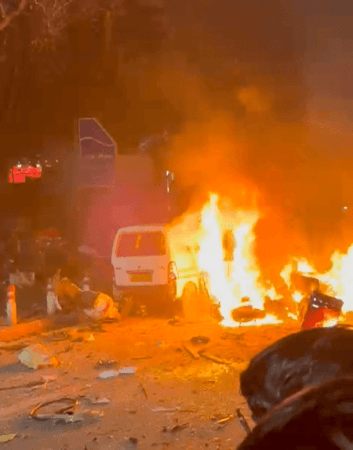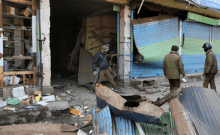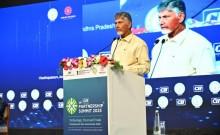
For decades, a convenient myth has floated around Kashmir's troubled history that terrorism in the Valley is a blue-collar phenomenon driven by poverty, lack of education, and exploitation. The reality, however, has always been far more unsettling.
Kashmir's terror ecosystem has been powered not by the poor or disadvantaged alone, but by individuals who grew up in privilege—educated, well-placed, and economically comfortable. Many lived in spacious homes, owned land, and enjoyed social standing. Yet, they chose to lend their intellect, networks, and credibility to the machinery of terror.
This uncomfortable truth resurfaced recently with the shocking revelation that several young Kashmiri doctors were part of a sinister terror plot.
For many who grew up in the Valley and were forced to flee after years of targeted persecution, the involvement of such professionals did not come as a surprise. They had witnessed firsthand how radicalisation had seeped into every layer of society—including among the well-off and highly educated.
The root of Kashmir's terrorism has never been socioeconomic deprivation. It has always been ideological. From the time of Independence, the long-term objective of Pakistan-backed separatism was the religious homogenization of the region, culminating in its integration with Pakistan. When this agenda failed through wars in 1965, 1971, and 1999, Islamabad shifted gears. The proxy war launched in 1988 targeted Kashmiri Pandits first, forcing an entire community into exile. What was framed as an "independence struggle" was, at its core, a religious project to turn Kashmir into an Islamic territory aligned with Pakistan's unfinished 1947 dream.
The recent terror plot uncovered in Haryana's Faridabad once again exposes this deeper ideological foundation. The accused were not foot soldiers but doctors—individuals from affluent Kashmiri families, with impressive educational backgrounds and comfortable lifestyles. They lived in large houses with gardens, earned well, spoke fluent English, and were tech-savvy professionals; one would assume they had no reason to be drawn into violence. Yet, beneath that polished exterior lay a chilling resolve. Their radicalization was not born of deprivation; it was a matter of belief.

Names such as Dr Umar Mohammad, Dr Muzaffar Ahmad, Dr Adeel Ahmad Rather, Dr Muzammil Shakeel, Dr Shaheen Saeed, Dr Mohammed Arif Mir, and Dr Farooq Ahmad Dar have now surfaced, and the list continues to grow.
Reports suggest that nearly 15 more doctors may be part of this new "D-gang." Until now, the only D-gang India knew was the terror-mafia network of Dawood Ibrahim, responsible for the devastating 1993 serial blasts in Mumbai and sheltered in Pakistan ever since. Now, 32 years later, emerges another D-gang—this time not a mafia syndicate, but the cold-blooded doctors' terror gang.
The involvement of these medical professionals is not an aberration. The death of a suicide-bomber doctor and the arrest of other medical professionals prove that successive governments at the Centre have chosen to look away from the core reality: terrorism in Kashmir has never been about lack of development, opportunities, or infrastructure. It is fundamentally a religious war—jihad. And this is not the first time that doctors, professionals, or government officers have been involved in terrorist activities.
From the very beginning of terrorism in the Valley, a large section of the educated Muslim class was deeply involved. They supported and enabled the terror network to grow and unleash violence against minorities—Hindus, Sikhs, and anyone suspected of being pro-India. In the early 1990s, when Kashmiri Pandits were targeted, it was often the "good old neighbor," a colleague, or even a friend who supplied information about Hindu families to the terrorists.
Telecom engineer B.K. Ganjoo, brutally killed in 1990 while hiding inside a drum at his home, might have survived had his security not suddenly disappeared and had his neighbour not guided the killers to his hiding place. Girja Tickoo might not have been gang-raped for days and eventually killed on a saw machine if her own office colleagues had not been part of the plot. The terror enablers were educated individuals who knew the victims personally—yet they chose to betray them.

Doctors, in particular, have had a troubling history within Kashmir's terror narrative. In the early years of militancy, several cases emerged of medical professionals refusing to treat Hindu victims of terror attacks—not out of fear, but out of solidarity with the separatist cause.
Dr Abdul Ahad Guru, a well-known surgeon in the 1980s, was a strong supporter of the Jammu Kashmir Liberation Front (JKLF). He was known as a critic of the security forces and even acted as a channel of communication between the government and terrorists. He is said to have played a role in securing the release of the daughter of the then Home Minister Mufti Sayeed in 1989.
One of the most disturbing examples was the Shopian case of 2009. Two women, Asiya Jan and Neelofar Jan, were found dead, and initial post-mortem reports by two doctors, Bilal Ahmad and Nighat Shaheen, alleged rape and murder by security forces. The Valley erupted. For 42 days, life came to a halt.
When the CBI investigated, it found that the women had drowned and had neither been raped nor murdered. The doctors, the investigation revealed, had fabricated evidence, tampered with biological samples, and intentionally misled the public to inflame unrest. Dr Nighat even used her own vaginal swab and passed it off as one of the victim's samples. When the bodies were exhumed, it was confirmed that no sexual assault had occurred. Fourteen years later, in June 2023, the Jammu & Kashmir administration finally dismissed the implicated doctors from service. The CBI chargesheet included not only doctors, but lawyers and civilians, illustrating the depth of the conspiracy.
There have been cases where the elites have been identified and duly punished. The current Lt. Governor, Manoj Sinha, did take strong steps in identifying the hidden sympathisers and instigators. Some of these included Dr Syed Ghulam Jeelani (Kashmir University), Assistant Professor, who was dismissed for links with separatist networks in 2021; Dr Mushtaq Ahmad Rather, a Scientist at the SKIMS, was dismissed in 2021 under terrorism-related allegations. In 2017, Professor Muhammad Ashraf Mir, Assistant Professor, Pulwama Degree College, was arrested during violent protests. A Deputy Superintendent of Jail, Feroz Ahmad Lone, was arrested in 2021 for facilitating terrorists inside jail.
Then there is the shocking case of Dr Nisar ul Hassan, who was posted in the Medicines Department of the SMHS Hospital, Srinagar, and was also functioning as the president of the Doctors Association of Kashmir (DAK). He was dismissed by the Lt. Governor's administration on November 21, 2023, along with three other officials, for their terror links. But this doctor was recruited by Al-Falah University, Faridabad, Haryana, and is said to be a part of the D-Gang.
This pattern—of professionals weaponising their stature and skills to serve extremist goals—is not limited to isolated incidents. Over the years, numerous terror investigations have exposed a tightly woven nexus of politicians, activists, doctors, lawyers, teachers, and even law enforcement officers.
The idea that radicalisation is confined to the uneducated or economically vulnerable does not hold up to scrutiny. The Valley's conflict has always had its most critical support from within the educated class, whose influence and networks amplified its reach.
The recent arrests of Kashmiri doctors planning attacks far from the Valley underscore a sobering reality. Radicalisation in Kashmir is not a fringe phenomenon—it is deeply institutional, socially enabled, and often silently endorsed.
The Faridabad case is a reminder that the conflict in Kashmir cannot be understood through simplistic narratives of poverty or deprivation. It is a complex, deeply ideological battle -- and until the country recognises the extent to which radicalisation has penetrated even the most privileged segments of Kashmiri society, the problem will remain painfully misunderstood.
The rot runs deep, and radicalisation remains a stark and uncomfortable truth.
(With inputs from IANS)

















